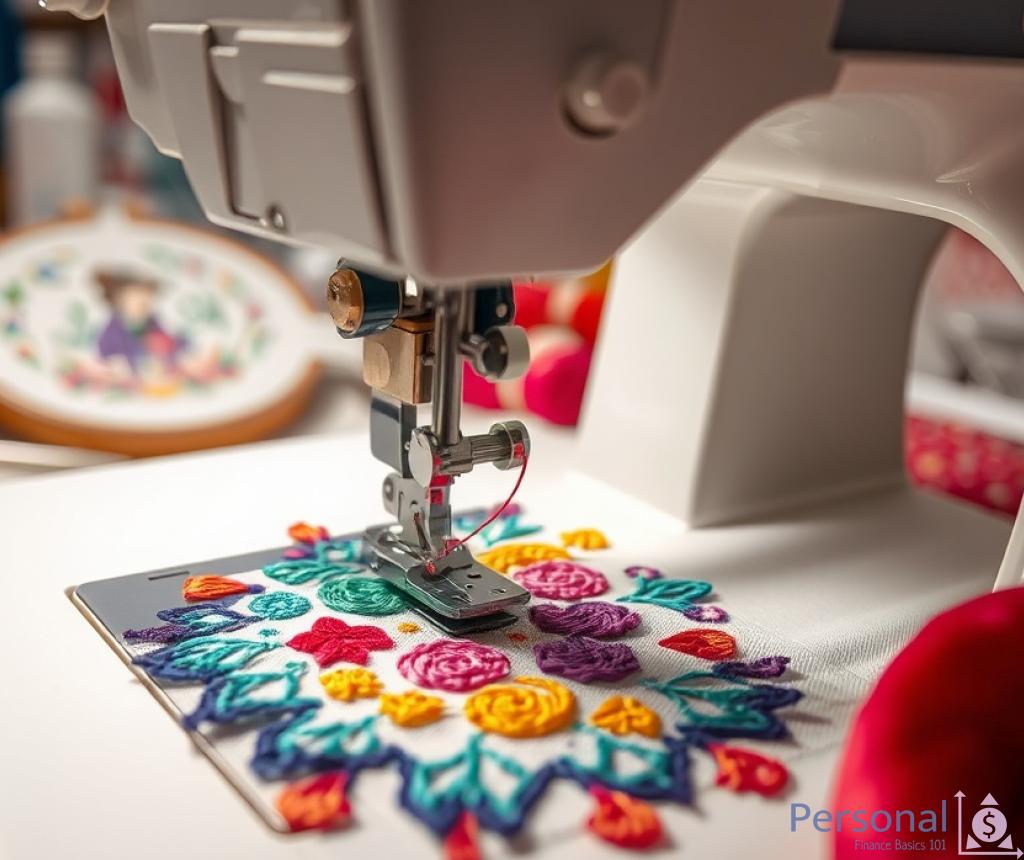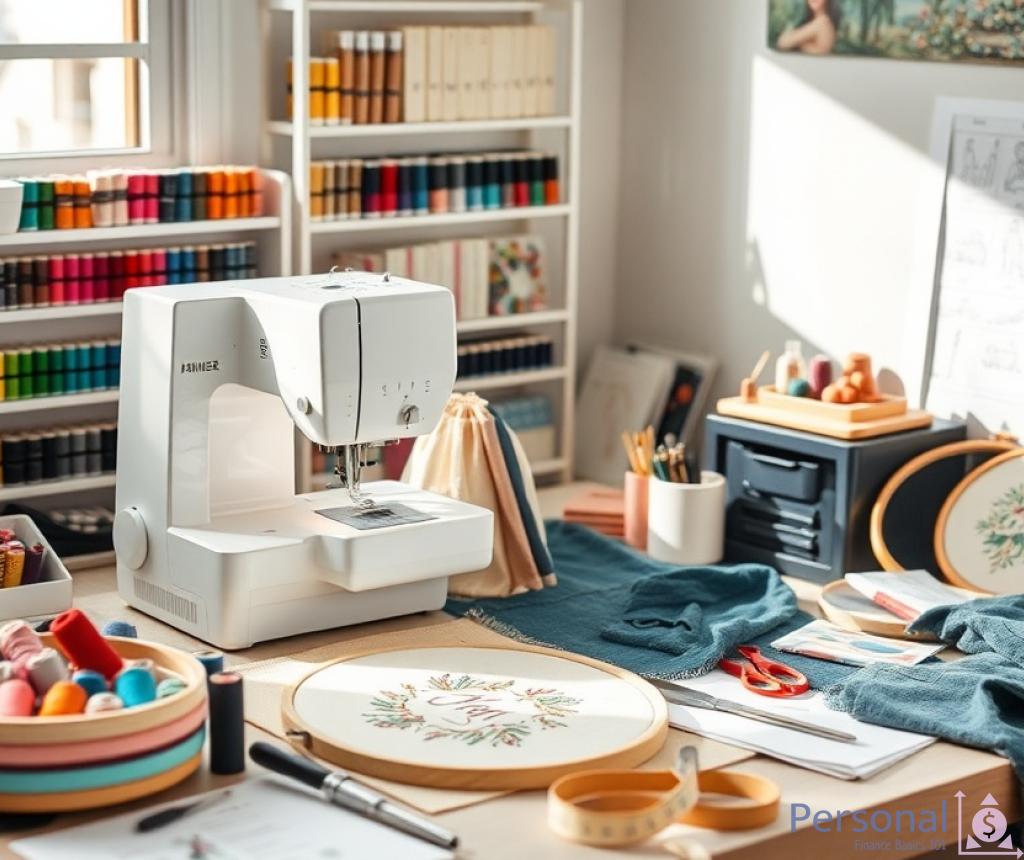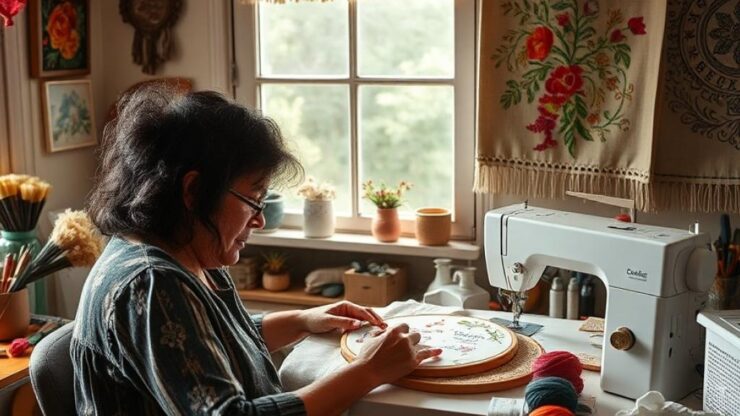Understanding the Basics of Custom Embroidery

The Art of Needle and Thread
Custom embroidery is more than just a craft; it is a vibrant form of textile artistry that can serve as a profitable side business. With a rich history that spans cultures and centuries, embroidery has evolved into a sought-after service for personal and commercial applications. Whether you are looking to customize apparel, create unique gifts, or establish a brand identity, understanding the fundamentals of custom embroidery is crucial.
Key Techniques in Custom Embroidery
Before diving into the business side, it’s essential to familiarize yourself with the various techniques involved in custom embroidery. Each method brings its own flair and can significantly impact the final product’s quality and aesthetic appeal. Here are some of the key techniques that every aspiring embroiderer should know:
- Digitizing: The process of converting images into a format suitable for embroidery machines.
- Machine Embroidery: Utilizing computerized machines to produce intricate designs quickly and efficiently.
- Hand Embroidery: A traditional method that emphasizes personalization and artistic expression.
- Appliqué: A technique where fabric pieces are sewn onto a base fabric, adding texture and dimension.
Choosing the Right Tools and Materials
Having the right tools and materials is paramount for anyone looking to venture into custom embroidery. This not only ensures quality results but also enhances the overall efficiency of your work. Below is a comparison of essential tools and materials you may need:
| Item | Description | Purpose |
|---|---|---|
| Embroidery Machine | A specialized sewing machine designed for embroidery. | Automates the stitching process, allowing for intricate designs. |
| Embroidery Threads | High-quality threads in various colors and textures. | Used for creating vibrant and durable designs. |
| Stabilizers | Material used to support the fabric during embroidery. | Prevents fabric distortion and ensures clean stitching. |
| Hoops | Devices that hold fabric taut while embroidering. | Essential for precision and accuracy in stitching. |
Essential Tools and Equipment for Embroidery

To embark on your journey in custom embroidery, equipping yourself with the right tools and equipment is essential. The right instruments not only facilitate quality crafting but also streamline your workflow, allowing you to focus on the creative aspects of your projects. Below, we delve into the must-have tools that can transform your embroidery experience from mundane to extraordinary.
Key Equipment for Your Embroidery Toolkit
The foundation of any successful embroidery venture lies in the tools you choose. Each piece of equipment contributes uniquely to the overall quality of your work, making it crucial to understand their individual roles. Below is a curated list of essential tools that every embroiderer should consider incorporating into their toolkit:
- Embroidery Machine: A high-performance sewing machine tailored for embroidery tasks. It automates the stitching process, allowing for detailed designs with remarkable speed.
- Embroidery Threads: Quality threads available in a spectrum of colors and textures. They are vital for creating vibrant and long-lasting designs.
- Stabilizers: Materials that provide support and structure to the fabric during the embroidery process. They prevent distortion and maintain the integrity of the design.
- Hoops: Devices that firmly hold the fabric in place while embroidering. These are crucial for maintaining precision and achieving clean stitches.
- Scissors: Sharp, precise scissors designed for trimming threads and fabric edges, ensuring a polished finish.
Understanding the Importance of Quality Materials
In addition to tools, the quality of materials can greatly affect the outcome of your embroidery projects. Choosing the right fabric and threads is key to achieving professional results. The following table outlines various materials and their applications in custom embroidery:
| Material | Description | Recommended Use |
|---|---|---|
| Cotton Fabric | Soft and versatile fabric, ideal for various projects. | Shirts, bags, and home decor. |
| Polyester Thread | Durable and colorfast, ideal for high-stress items. | Activewear and outdoor items. |
| Felt | A non-woven fabric that adds texture and ease of handling. | Children’s projects and crafts. |
Finding Your Niche with Specialized Tools
As you advance in the world of custom embroidery, you may discover specific areas of interest that require specialized tools. For instance, if you’re inclined towards free-motion embroidery, investing in a darning foot may enhance your capabilities. Similarly, if you wish to explore intricate designs, a multi-needle machine can offer efficiency and versatility. Embracing these specialized tools can expand your creative horizons and help you carve out a niche in the bustling market of custom embroidery services.
Marketing Your Custom Embroidery Services
As you embark on your journey to establish a successful custom embroidery business, mastering the art of marketing is essential. With a unique blend of creativity and business acumen, you can effectively showcase your textile artistry to a wider audience. This guide will help you navigate various marketing strategies tailored specifically for custom embroidery services, ensuring that your craft not only garners attention but also translates into tangible sales.
Leveraging Social Media Platforms
In today’s digital age, social media serves as a powerful tool for promoting your embroidery services. Platforms like Instagram, Facebook, and Pinterest allow you to display your intricate designs and connect with potential customers. Here are some effective ways to harness social media:
- Visual Storytelling: Use high-quality images and videos to showcase your embroidery work, telling the story behind each piece to engage your audience.
- Consistent Posting: Create a content calendar to regularly update your social media profiles with fresh designs, behind-the-scenes processes, and customer testimonials.
- Engagement: Interact with your followers by responding to comments, hosting live Q&A sessions, and encouraging user-generated content through contests or challenges.
Building a Strong Online Presence
Having a robust online presence is crucial for attracting customers. This involves creating a professional website and utilizing various online marketplaces. Here’s how to establish a strong digital footprint:
- Create a Professional Website: Invest in a user-friendly website that showcases your portfolio, services, and pricing. Include a blog section to share tips, tutorials, and insights about embroidery, which can drive traffic to your site.
- Utilize Online Marketplaces: Platforms like Etsy or Amazon Handmade can help you reach a broader audience. Ensure your listings are optimized with relevant keywords to enhance visibility.
- Email Marketing: Build a mailing list and send out regular newsletters featuring new designs, special promotions, and upcoming events to keep your audience engaged.
Networking and Community Engagement
Establishing connections within your local community and industry can significantly boost your embroidery business. Networking opens doors to collaboration and customer referrals. Here are some approaches:
- Attend Craft Fairs and Markets: Set up a booth at local events to showcase your work and interact directly with potential customers.
- Join Online Forums and Groups: Engage in embroidery and craft-related communities to share knowledge, gain insights, and promote your services.
- Collaborate with Local Businesses: Partner with boutiques, schools, or event planners to provide custom embroidery services, which can help expand your reach and credibility.
Pricing Strategies for Custom Embroidery Projects
Determining the right pricing strategy for your custom embroidery services is essential for establishing a sustainable side business. Pricing not only reflects the quality and uniqueness of your work but also plays a critical role in attracting customers and generating profit. A well-thought-out pricing strategy can set you apart in a competitive market and ensure that your artistry is valued appropriately.
Factors Influencing Your Pricing
When it comes to pricing your custom embroidery projects, several factors come into play. Understanding these elements will help you formulate a pricing structure that is both fair to your customers and profitable for you. Below are key considerations that should influence your pricing strategy:
- Material Costs: Assess the cost of fabrics, threads, stabilizers, and any other materials needed for each project. High-quality materials can enhance the value of your work.
- Labor Time: Factor in the time spent on each project, from design to execution. The more intricate the design, the more you should consider charging for your craftsmanship.
- Complexity of Design: Projects with detailed or custom designs often require more skill and experience, justifying a higher price point.
- Market Demand: Analyze your competitors and the market demand for custom embroidery in your area. Understanding pricing trends can help you position your services effectively.
- Target Audience: Consider the spending habits and preferences of your target customers. Tailoring your prices to their expectations can enhance sales.
Establishing a Pricing Model
Creating a pricing model is crucial for maintaining consistency across your projects. Here are some common models that you can adopt:
- Cost-Plus Pricing: Calculate the total cost of materials and labor, and then add a markup percentage to determine your selling price.
- Value-Based Pricing: Set your prices based on the perceived value of your products to your customers, rather than solely on costs.
- Tiered Pricing: Offer different pricing tiers based on the complexity of the design, volume of orders, or additional services such as fast-tracking or custom design consultations.
By employing a suitable pricing model, you can ensure that your custom embroidery services remain competitive while also reflecting the quality and effort you put into your artistry.
Communicating Value to Customers
Once you have established your pricing strategy, effectively communicating the value of your custom embroidery services to potential customers is vital. Here are a few strategies to enhance your customer engagement:
- Showcase Your Work: Utilize high-quality images and detailed descriptions to highlight the craftsmanship that goes into each piece.
- Share Your Story: Connect with your audience by sharing the story behind your custom embroidery journey and the passion that drives your work.
- Leverage Testimonials: Encourage satisfied customers to share their experiences. Positive reviews can significantly influence potential buyers’ perceptions of value.
By focusing on these aspects, you can establish a pricing strategy that not only covers your costs but also resonates with your customers, thus enhancing your custom embroidery business’s sustainability and growth.
Expanding Your Skillset: Advanced Techniques in Embroidery
Delving Deeper into Embroidery Techniques
As you embark on your journey into the world of custom embroidery, mastering basic techniques is just the beginning. To truly distinguish yourself in this vibrant field, exploring advanced techniques can significantly elevate your artistry and broaden your service offerings. Understanding and implementing these sophisticated methods not only enhances your skillset but also allows you to create more intricate and personalized designs that resonate with your clients.
Embracing Innovative Techniques
Among the advanced techniques that every aspiring embroiderer should consider incorporating into their repertoire are 3D embroidery, free-motion embroidery, and embroidery with mixed media. Each of these methods introduces a unique dimension to your work, enabling you to create stunning pieces that stand out in a crowded marketplace.
3D embroidery, also known as puff embroidery, involves using foam to create a raised effect on the fabric. This technique is particularly popular in the customization of caps and logos, providing a bold, eye-catching look. By utilizing specialized embroidery machines and foam materials, you can achieve a professional finish that enhances branding efforts.
Free-motion embroidery offers an exciting avenue for artistic expression. This technique allows the embroiderer to move the fabric freely under the needle, creating intricate and varied designs that mimic drawing with thread. This method encourages creativity and personalization, making each piece one-of-a-kind. By practicing free-motion techniques, you can develop a distinctive style that sets your work apart.
Lastly, embroidery with mixed media combines various materials such as beads, sequins, and fabrics to produce visually captivating designs. This technique allows you to experiment with texture and color, resulting in unique creations that can attract a diverse clientele. Incorporating mixed media not only expands your design possibilities but also enhances the tactile experience of your embroidered pieces.
Mastering the Tools of the Trade
To effectively implement these advanced techniques, equipping yourself with the right tools is essential. For example, investing in a high-quality embroidery machine with a free-motion foot and various attachments can significantly enhance your capabilities. Additionally, utilizing software for digitizing designs can streamline the process of creating custom patterns, allowing for greater precision and detail.
Understanding the materials you work with is equally important. Selecting high-quality threads, stabilizers, and embellishments can impact the overall quality and longevity of your projects. For instance, using specialty threads such as metallic or variegated threads can add depth to your designs, making them more appealing to customers.
| Technique | Description | Benefits |
|---|---|---|
| 3D Embroidery | Utilizes foam for a raised effect | Bold branding; eye-catching designs |
| Free-motion Embroidery | Allows free movement of fabric for creative designs | Unique, personalized pieces; artistic expression |
| Mixed Media Embroidery | Combines various materials for texture | Diverse designs; enhanced tactile experience |
By embracing these advanced techniques and mastering the tools required, you’ll not only expand your skillset but also enrich your custom embroidery services, paving the way for a successful venture into the world of textile artistry.
Disclaimer
This article has been created or edited with the support of artificial intelligence and is for informational purposes only. The information provided should not be considered investment advice. Please seek the support of a professional advisor before making any investment decisions.






